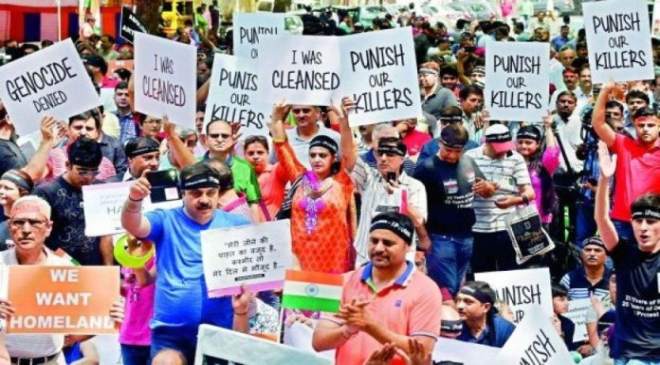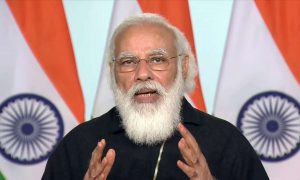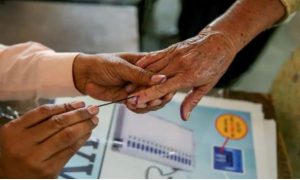The Kashmiri Pandit community living in exile in Jammu and other parts of India marked September 14 as “Martyrdom Day” as it was on this day in 1989 that first Kashmiri Pandit, Tika Lal Taploo, was killed by the first generation of Kashmiri militants. The violence soon escalated, resulting in the exodus of nearly 97 per cent of the Kashmiri Pandit community from Kashmir valley in next few years. That technically amounts to a successful “religious minority cleansing”.
Kashmir valley has unfortunately never emerged from the vicious and never-ending cycle of death and destruction that descended upon it after the murder of Tika Lal Taploo, even after more than 30 years. This is a collective tragedy of Kashmir and Kashmiri people.
The most unfortunate outcome of the exodus of Kashmiri Pandit community has been the loss of Kashmiri cultural ethos that defined a Kashmiri person and made him/her different from others. Kashmiri Pandits were part of this unique cultural identity, something that was lost with the loss of Kashmiri Pandits.
The injustice done to Kashmiri Pandits has never been honestly discussed and debated ever since the murder of Tika Lal Taploo. The events that led to the unfortunate exodus of Kashmiri Pandits remain entangled in competition of divergent political narratives. But one thing is clear, there is hardly any remorse or guilt or for that matter shame among Kashmir’s majority community over what happened to Kashmir’s Hindu minority. The reason why this is important is because the question of “what about Kashmiri Pandits” has never really gone away from any discussion that happened about Kashmir anywhere in the world in the last 30 years.
I was born in the year the Kashmiri Pandits left Kashmir valley and my generation has been narrated two different and diametrically opposite reasons for why Kashmir valley was emptied of its Hindu minority within few months. It is useless to discuss merits of these two narratives because Kashmiris only believe the narrative that suits their political and religious ideology. The stigma and shame of what happened to Kashmiri Pandits however cannot be erased by any conspiracy theory—and there are no takers at international level for such narratives either.
It is clear that Kashmiri Pandits were caught in a political storm that was initiated from across the border, but Kashmir’s majority community had a special responsibility to protect its religious minority, which they deliberately failed to do in the utopian belief of achieving a political goal for which Kashmiri Pandits were believed to be a “hurdle” which had to be “removed”. The circumstances under which Kashmiri Pandits had to leave speak of deliberate humiliation, which was heaped solely based on hatred for a religious minority.
But the greater question that arises is, was the price that Kashmir paid for throwing out its Hindu minority worth it? Kashmir today is not even politically what it used to be in 1989, when Tika Lal Taploo was murdered. The former state is now split into two union territories, a demoted status. The three decades of political instability has not only destroyed the once-thriving economy of Kashmir valley but has also plunged Kashmir into abyss of religious radicalism, social conservatism, epidemic of drugs and social despondency. Growing without religious minority has made younger generations intolerant of any religious and social diversity, and that is now reflected in the increasing decline of Sufi-oriented culture and way of life among Kashmiri people, and is facing an existential threat with the rise of religious puritanical ideologies.
It is very disappointing to see that there is hardly any genuine collective desire or willingness among Kashmir’s majority community to introspect about what really happened to Kashmiri Pandits and how their respectful return can be ensured. When Kashmir’s majority community continues to thrust its own version of “migration” of Kashmiri Pandits and not their “forced exodus”, how can the world trust the intention of Kashmir’s majority community that they are indeed willing to bring back Kashmiri Pandits?
Acknowledging our guilt is the first step towards bringing the good old days back in Kashmir. Kashmiri Pandits not just want to return to Kashmir valley, they want to return with full honor and dignity.
But is Kashmir’s majority community really willing to do so? Unfortunately, the fact remains that Kashmir’s majority community has not entirely owned up to its mistakes, even as they realize that their futile political adventure has completely destroyed Kashmir valley and jeopardized Kashmir’s future generations.
Yet, there is hope that eventually better sense will prevail and there will be a genuine attempt on the part of the majority community of Kashmir to introspect about their acts of omission.
Kashmiri Pandits are part and parcel of the Kashmiri cultural identity. Without them, the future generations of Kashmir will be devoid of this syncretic culture. It will be a pale shadow of its former glorious self. It is important the present generation of Kashmir’s majority community realizes what kind of Kashmir are they handing over to our next generation.
The religiously intolerant, socially conservative, regressive, inward-looking Kashmiri is not the hallmark of Kashmir. A true Kashmiri regardless of his/her religion used to be as an intelligent, artistic, secular, liberal, free-spirited, wise person with original thinking and a creative mind. That was largely enabled by Kashmir’s syncretic Hindu and Muslim cultural traditions, of which Kashmiri Pandits were an important part. But with their forced exodus after Tika Lal Taploo was murdered three decades ago, Kashmir valley has completely lost its way towards a glorious, peaceful and prosperous future.
It is crucial for the sake of our future generations that Kashmiri Pandits return with full honour and dignity. For that to happen, we, the majority community of Kashmir valley, will have to collectively make a genuine and honest promise.



































